Embracing Differences, Unlocking Potential of Neurodiversity
09 Jan, 20244 minutesOne of the biggest issues within IT Infrastructure recruitment is access to skilled IT talen...

One of the biggest issues within IT Infrastructure recruitment is access to skilled IT talent.
Some people argue that it’s a case of demand being too high for the supply of talent that is available, others say it’s a case of talent going unnoticed by recruiters. Today we’re taking a closer look at the latter one: untapped talent pools.
Diversity and inclusion have been important topics all around, but especially in the fight against skills shortages. At Franklin Fitch we are committed to raising awareness and tackling biases towards diversity & inclusion matters within IT infrastructure. Diversity and inclusion cover many areas, the most known being diverse ranges in sexuality, cultures, and philosophy. Today we’d like to talk about a diverse range of different modes of thinking a.k.a neurodiversity.
The term “neurodiversity” is used to describe people with certain neurological conditions or people who are on a neurodiverse spectrum. This includes conditions like autism spectrum disorder, dyslexia, dyspraxia (a neurologically based physical disorder), social anxiety disorders, and others. People on the neurodiverse spectrum often have difficulties with social interaction and communication in the way a neurotypical person would cope with them, but many people with these ‘disorders’ also have higher-than-average abilities, often in areas such as pattern recognition, concentration, memory, or mathematics.
Autism affects more than one in 100 people which means a huge amount of talent. In the United States, the unemployment rate for adults with autism is estimated to be between 80-90%, indicating a significant disparity compared to the general population. So now you might think ‘how come the tech industry hasn’t snapped all of these skilled workers up yet?’ Au contraire, many big tech companies like SAP, HPE, and Microsoft (amongst others) have already implemented processes and programs to access neurodiverse talent. For those who haven’t, it is probably a matter of one or some of the following.

Understanding Neurodiversity
Neurodiversity is not about viewing neurological differences as disorders to be fixed, but rather as natural variations in the human brain. Just as biodiversity enriches ecosystems, neurodiversity enriches society by offering a wide range of perspectives, talents, and abilities. It encompasses a spectrum of conditions, each with its own strengths and challenges, including autism, ADHD, dyslexia, Tourette syndrome, and others.
Rethinking Traditional Definitions of Talent
In traditional workplaces, talent is often narrowly defined, leading to the exclusion of individuals who may think and process information differently. However, neurodiverse individuals possess unique strengths that can greatly benefit organizations. For example, those with autism may have exceptional attention to detail, pattern recognition abilities, and intense focus, making them well-suited for tasks requiring precision and analysis. Similarly, individuals with ADHD may thrive in dynamic environments, where their creativity, hyperfocus, and ability to multitask can lead to innovative solutions and out-of-the-box thinking. By expanding our understanding of talent to include neurodiversity, companies can tap into a diverse pool of skills and perspectives that drive competitiveness and growth.
Challenges and Misconceptions
While progress has been made in raising awareness about neurodiversity, significant challenges and misconceptions still persist in society. One of the most pressing issues is the prevalence of stigma and discrimination faced by neurodivergent individuals. Despite efforts to promote inclusion, many people with neurodevelopmental conditions encounter bias and prejudice in various aspects of their lives.
In the workplace, neurodivergent individuals may encounter barriers to employment due to stereotypes and misunderstandings about their capabilities. Hiring managers and employers may overlook neurodiverse candidates or hesitate to provide necessary accommodations, fearing potential challenges or disruptions in the workplace. As a result, many neurodiverse individuals face unemployment or underemployment, despite possessing valuable skills and talents.
Social inclusion is another area where neurodivergent individuals often face challenges. Misconceptions about social behavior and communication differences can lead to ostracization and isolation from peers. Neurotypical individuals may struggle to understand or accommodate the unique needs of neurodiverse individuals, leading to misunderstandings and social barriers.
Moreover, the lack of awareness and understanding about neurodiversity contributes to the perpetuation of harmful stereotypes and misconceptions. These misconceptions can lead to negative attitudes and discriminatory behavior towards neurodivergent individuals, further marginalizing them within society.
Unlocking Potential in the Workplace
Recognizing and embracing neurodiversity within the workplace isn't merely a moral obligation; it's a strategic asset that can yield significant advantages for organizations. Neurodiverse individuals bring a diverse set of strengths and abilities that can positively impact various aspects of business operations.
Consider, for instance, individuals with autism who frequently exhibit exceptional attention to detail and an unparalleled aptitude for pattern recognition. These talents make them invaluable assets in roles that necessitate precision and analytical thinking, such as quality assurance and data analysis.
Similarly, individuals with ADHD possess attributes that are highly conducive to thriving in fast-paced and dynamic work environments. Their propensity for creativity, hyperfocus, and adept multitasking skills equips them to excel in roles that demand innovation and adaptability, such as project management and strategic planning.
By embracing neurodiversity and leveraging the unique strengths of neurodiverse individuals, organizations can foster a more inclusive and innovative workplace culture. Embracing diverse ways of thinking and problem-solving not only enhances team dynamics but also fosters a more holistic approach to tackling complex challenges and driving sustainable business growth.
Success Stories and Best Practices
Many forward-thinking companies have recognized the value of neurodiversity and implemented inclusive practices with remarkable results. Numerous forward-thinking companies have embraced the benefits of neurodiversity and have implemented inclusive practices with remarkable outcomes. Giants in the tech industry such as SAP, Microsoft, and Hewlett Packard Enterprise have led the charge by establishing programs specifically designed to recruit and support neurodiverse talent.
These initiatives go beyond mere lip service; they are comprehensive programs aimed at tapping into the unique strengths and abilities of neurodiverse individuals. By creating supportive environments and providing tailored accommodations, these companies have witnessed tangible improvements in various aspects of their business operations. One notable outcome of these programs is the heightened level of innovation observed within these organizations. Neurodiverse individuals often possess unconventional ways of thinking and problem-solving, which can lead to the generation of novel ideas and approaches. By harnessing the diverse perspectives of their neurodiverse workforce, companies have been able to foster a culture of innovation that drives competitive advantage and sets them apart in the market.
These inclusive practices have resulted in significant gains in productivity and efficiency. By providing accommodations and support tailored to the needs of neurodiverse employees, companies have enabled them to perform at their best. This has led to increased productivity, as neurodiverse individuals are empowered to leverage their strengths and contribute meaningfully to their teams and projects.
Perhaps most importantly, these programs have contributed to enhanced employee satisfaction and well-being. By creating environments that prioritize inclusivity and support, companies have fostered a sense of belonging and acceptance among neurodiverse employees. This has not only improved morale and engagement but has also contributed to greater retention rates and a more diverse and vibrant workforce overall.
Celebrating Diversity
As we celebrate neurodiversity, let's embrace the unique strengths and perspectives that neurodiverse individuals bring to our communities and workplaces. By embracing neurodiversity in all its forms, we can create a more inclusive and supportive environment where everyone has the opportunity to thrive. Environments of acceptance, understanding, and inclusion, can unlock the full potential of every individual and build a more vibrant and equitable society.
At Franklin Fitch we are committed to raising awareness and tackling biases towards diversity & inclusion matters within IT infrastructure. If you’d like to know more about hiring neurodiverse talent, feel free to get in touch and we can point you in the right direction.






